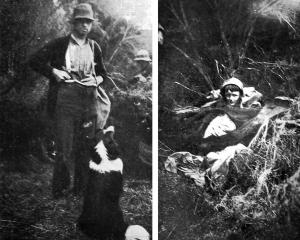It is 74 years since James Eights, an American naturalist and explorer, first announced that, while away down in the South Orkneys, near the Antarctic Circle, south of South America, he had discovered a sea spider with five pairs of legs. His work was lost for a long time, and when it was brought under notice again modern zoologists gave it a cool reception.
Thousands of species of spiders, belonging to the land, the sea, and the shore, had been recorded, but no spider had ever been known to have more than four pairs of legs, and there was a refusal to believe that even a sea-spider, which might be allowed to have some eccentricities, had an extra pair.
Ten years ago, however, Mr T. V. Hodgson, biologist in Captain R. J. Scott's first Antarctic expedition, found several specimens of these much-legged spiders near M'Murdo Sound, where Captain Scott has his present winter quarters, and he at once established the authenticity of Eights's discovery. These creatures have now been found by Dr Bruce's Scottish expedition, also at the South Orkneys, and by Mr D. G. Lillie, biologist of Captain Scott's present expedition, again on the M'Murdo Sound side.
Ten-legged sea-spiders indeed have ceased to be things of wonder. They are sometimes found at great depths, and are brought to the surface in the biologist's trawls. They have slender bodies, about two inches long, and their sprawling legs, which give them a typically spidery appearance, are about three inches long.
Some sea-spiders, with the normal number of legs, have been brought up in different parts of the world, from 1600 fathoms and more. The conditions of life in the abysses of the sea, apparently, do not have a dwarfing effect, as several specimens of these spiders are very large. Little is known of the habits of sea-spiders. None has been known to possess the art of swimming, and all crawl slowly amongst branches of seaweed, where they find other creatures to prey upon.
As far as appearances go, they are just as ferocious and repulsive as their kinsmen on the land.
• The Rangitikei Sawmillers Association has increased the price of heart of matai by 1s per 100ft (says the New Zealand Times). The reason for the advance is the great scarcity and increasing demand. It seems almost impossible to supply the demand coming from Wellington, Wanganui, and other parts. According to authorities, it is only a matter of a little time when this valuable timber will be cut right out. The Hawke's Bay, Manawatu, and Wairarapa bushes have all disappeared.
- ODT, 5.11.1912.
COPIES OF PICTURE AVAILABLE FROM ODT FRONT OFFICE, LOWER STUART ST, OR WWW.OTAGOIMAGES.CO.NZ












